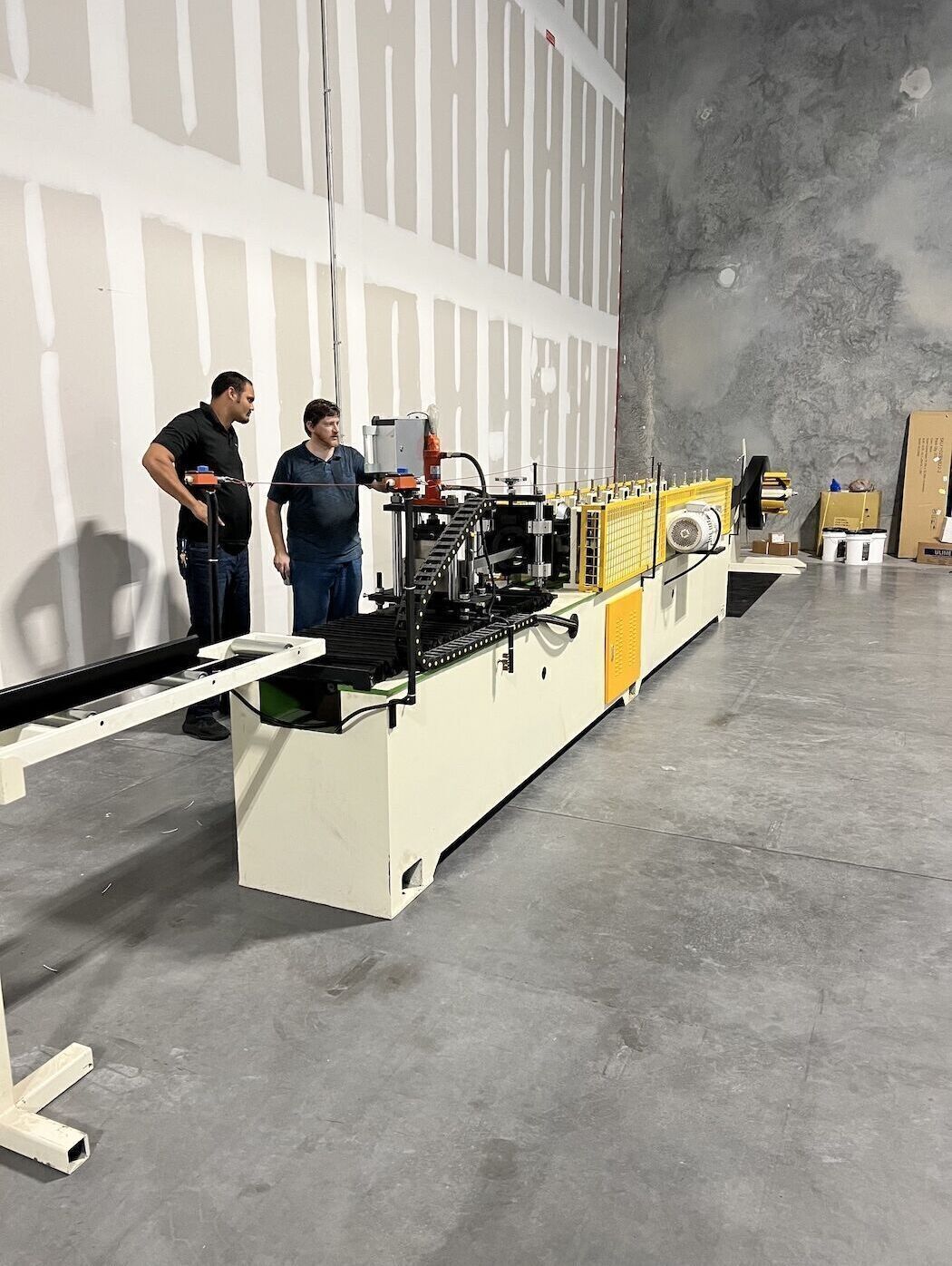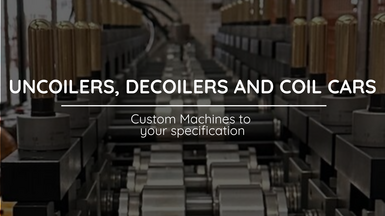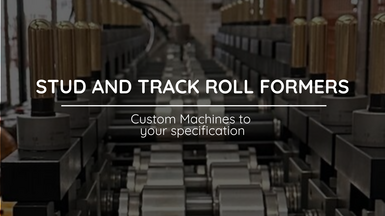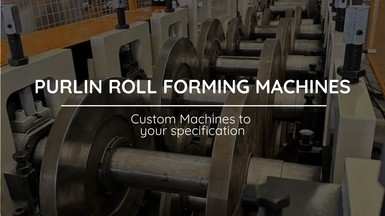
Roof Flashing Roll Forming Machine
Here's how a roof flashing roll forming machine works
Posted on Monday, November 20, 2023
A roof flashing roll forming machine is a specialized piece of equipment used in the construction industry to manufacture roof flashing materials. Roof flashing is a crucial component of a roofing system, as it helps to prevent water infiltration and directs water away from vulnerable areas of the roof, such as valleys, chimneys, vents, and walls. Flashing is typically made from metal, such as galvanized steel, aluminum, or copper, and it comes in various shapes and sizes to fit the specific needs of a roofing project.
Here's how a roof flashing roll forming machine works:
- Material Loading: The roll forming machine starts with a roll of metal coil, which is typically loaded onto a feeding mechanism.
- Feeding and Straightening: The coil is fed into the machine, and a straightening mechanism ensures that the metal strip is flat and even before it enters the forming section.
- Roll Forming: The heart of the machine is the roll forming section, where a series of rollers and dies shape the flat metal strip into the desired profile or shape for the roof flashing. This process involves bending, folding, and sometimes cutting the metal to achieve the desired shape and dimensions.
- Cutting and Shearing: Some roll forming machines have integrated cutting and shearing mechanisms to trim the flashing material to the required length. This ensures that the produced flashing pieces are of uniform size.
- Output and Stacking: The finished roof flashing pieces are then discharged from the machine, and they may be stacked or collected for further processing or packaging.
The specific design and features of a roof flashing roll forming machine can vary depending on the manufacturer and the requirements of the roofing material being produced. These machines are typically computer-controlled to ensure precision and consistency in the production process. They can also be adjusted to create different profiles and dimensions of roof flashing to meet the unique needs of various roofing projects.
Roof flashing roll forming machines play a critical role in the roofing industry by producing high-quality flashing materials efficiently, which helps in ensuring the long-term integrity of roofing systems by preventing leaks and water damage.
Roof Flashing Machine Profiles
Roof flashing profiles refer to the various shapes and configurations of metal pieces used in roofing systems to prevent water infiltration and direct water away from vulnerable areas. The choice of flashing profile depends on the specific needs and design of the roof. Here are some common roof flashing profiles:
- Step Flashing: Step flashing is typically used around roof penetrations such as chimneys, walls, and dormers. It consists of L-shaped metal pieces that are installed in a "stepped" pattern to create a watertight barrier where the roofing material meets a vertical surface.
- Chimney Flashing: Chimney flashing is designed to seal the area where the chimney meets the roof. It often includes a base flashing that surrounds the base of the chimney and step flashing that runs up the sides of the chimney.
- Valley Flashing: Valley flashing is used in roof valleys, where two sloping roof planes meet. It directs water away from the valley, preventing water from pooling and potentially causing leaks.
- Drip Edge Flashing: Drip edge flashing is installed along the edges of the roof to help channel water away from the fascia and into the gutter system. It also provides protection for the roof deck.
- Vent Pipe Flashing: Vent pipe flashing is used around plumbing vent pipes that protrude through the roof. It forms a watertight seal to prevent water from entering the roof around the pipe.
- Rake Edge Flashing: Rake edge flashing is installed along the gable ends of the roof to protect the edges of the roofing material and prevent wind-driven rain from getting under the roof.
- Z-Flashing: Z-flashing is used to protect horizontal seams in roofing, such as where a roof meets a wall or a dormer. It is shaped like a "Z" and provides a barrier against water infiltration.
- Eave Flashing: Eave flashing is installed along the eaves of the roof and helps prevent water from wicking back up under the roofing material.
- Wall Flashing: Wall flashing is used at the intersection of a roof and a vertical wall, such as in a dormer or a sidewall. It prevents water from seeping into the structure.
- Counter Flashing: Counter flashing is often used in conjunction with masonry walls to protect the top edge of base flashing. It is typically made of metal or other durable material.
These are just some examples of common roof flashing profiles. The specific profile used will depend on the architectural design of the building and the types of roof penetrations and intersections that need to be sealed to ensure a watertight roofing system. Properly installed flashing is essential for preventing water damage and extending the lifespan of a roof.
All our machines are all due to variations in the customer's demand, and we are always ready to assist with any issues. All machines are assembled by our expert team in Orlando, Florida. We have been leading the Roll Forming Machine market since 2009, and have great expertise, so you will be in safe hands. For further information, contact our team here.
For more Machines, browse our extensive range here
Roll Forming Machines LLC's New Factory
Posted on Sunday, March 23, 2025
We have relocated factories, which will be available for tours very soon.

Uncoiler, Decoiler and Coil Car Roll Forming Machine Accesories from Roll Forming Machines LLC
Posted on Sunday, November 24, 2024
Contact us today with your specifications for a custom Uncoiler, Decoiler or Coil Car at [email protected] or call us at (+1) (407) 859 1119

Stud and Track Roll Forming Machines from Roll Forming Machines LLC
Posted on Saturday, November 23, 2024
Contact us today with your specifications for a custom Stud and Track Machine at [email protected] or call us at (+1) (407) 859 1119

Cee and Zee Purlin Roll Forming Machines from Roll Forming Machines LLC
Posted on Saturday, November 23, 2024
Contact us today with your specifications for a custom Cee and Zee Purlin Machine at [email protected] or call us at (+1) (407) 859 1119